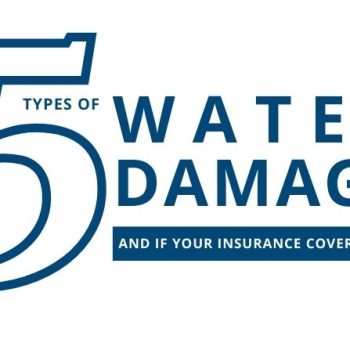Builder’s Risk vs. Standard Homeowners Policies
- Posted by Daniel Simcock
- On December 29, 2021
- fix and flip insurance, homeowners insurance
Whether you’re a contractor, a business-savvy person looking to invest in real estate, or an average homeowner looking to make substantial improvements to your property, you’ll want to carefully consider your insurance options. Choosing the right policy to meet your needs could not only protect your assets, but also save you money in the long run.
In this article we’ll be discussing the ins-and-outs of fix and flip insurance, or builder’s risk policies, and how it differs from standard home insurance.
Home Vacancy – Is your property insured when you’re away from it?
If you live in a home while it is being renovated, then a standard home insurance policy will typically protect you from covered damage. However, a standard policy excludes coverage for vacant homes. Damages that occur in vacant homes will most likely not be covered.
When a home is left unattended, the chances for all sorts of damage increase, such as fire and water damage. But a common risk with vacant homes is vandalism and theft. Building materials, copper pipes, appliances: when a home is being renovated, these are common targets for theft.
Typically, if your home is left unoccupied for 30 days or more, your insurance provider will not cover you for any damages that occur. For more specifics about home vacancy and vacant home insurance, please check out our article.
A builder’s risk policy not only extends coverage for vacant homes, but it also extends liability coverage as well. That way, if someone gets injured in your home and you are held liable for any reason, you will have insurance to back you up.
Financing Options – What insurance requirements will your financers require?
If you want to purchase a home to live in, you’ll most likely apply for a loan through a bank, credit union, or mortgage company. These lenders will make explicit what type of insurance you must have to qualify for their loans.
Financing a fix and flip home is different. Because these homes are short-term, sometimes unstable investments, a traditional lender is unlikely to finance them. This includes most banks and mortgage companies.
Typically, fix and flip properties are financed by hard-money lenders. Hard-money lenders are people who have money, loan it out, and make money by charging interest. This is usually done after they create an LLC.
Unlike a bank or lender, hard money lenders do not typically impose strict requirements on insurance. Some of them may if they’re really insurance savvy. But often, they may be just looking for a binder that shows that you have insurance. Which means that you are left to decide what insurance you’ll need, how much, and for how long.
Insurance Premiums – How expensive is it to insure a fix and flip property?
Compared to standard home insurance, fix and flip insurance policies are going to be more expensive. There are a few reasons for this, which we detail in another article. In short, it all comes down to the amount of risk involved with a fix and flip property.
However, fix and flip insurance policies often offer flexible, pro-rated payment options. This means that you only pay for the insurance you use and need. So, if you take out a twelve-month policy, but only use it for 9-months, you’ll only be charged for those 9-months.
You can take out a fix and flip insurance policy for as little as 3-months, but we always recommend a 12-month policy. In the long run, it can save you money and a few headaches.
We hope we’ve helped you understand the difference between standard home insurance and builders risk policies. And now we’d like to turn it over to you. Did you learn something new from this article? Or do have a question about your homeowners policy? Leave a comment below or contact us at info@lapointeins.com.


